Hyper Interdisciplinary Conference Singapore 2025 Concludes with Cross‑Sector Momentum on Energy, Health, and Food Futures!
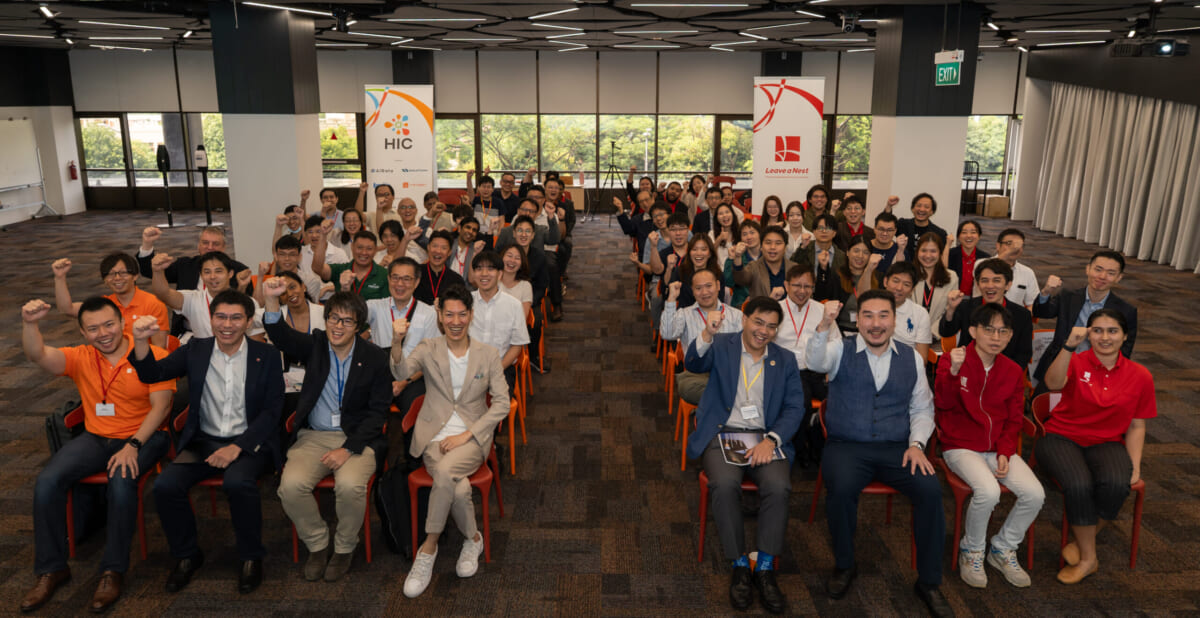
Singapore — 15 November 2025
Leave a Nest Singapore concluded the Hyper Interdisciplinary Conference (HIC) Singapore 2025 at NUS Enterprise, iCube Building, bringing together researchers, startups, corporates, and public agencies under the theme “The Future of Energy: Powering a Thriving Net Zero 2050.” The programme combined a morning keynote and rapid HIC Splash research previews with afternoon panel discussions and a poster showcase that turned conversations into concrete follow‑ups.
The event kicked off with the inspiring opening address from Sivakumar from Leave a Nest Singapore, for the participants to embrace the Hyper Interdisciplinary Communication to create new knowledge through discussion.
Followed up the opening remarks, Mr. JD Lee from the NUS Enterprise, our Academic partner of this conference shared on how the NUS Enterprise nurturing young talents through the National GRIP programme.

The main event started with inspiring Keynote speech from Mr. Takaya Taguchi from Helical fusion from Japan.

The morning session were ended after Hyper Interdisciplinary Splash from the researchers from Singapore, Thailand and Japan.
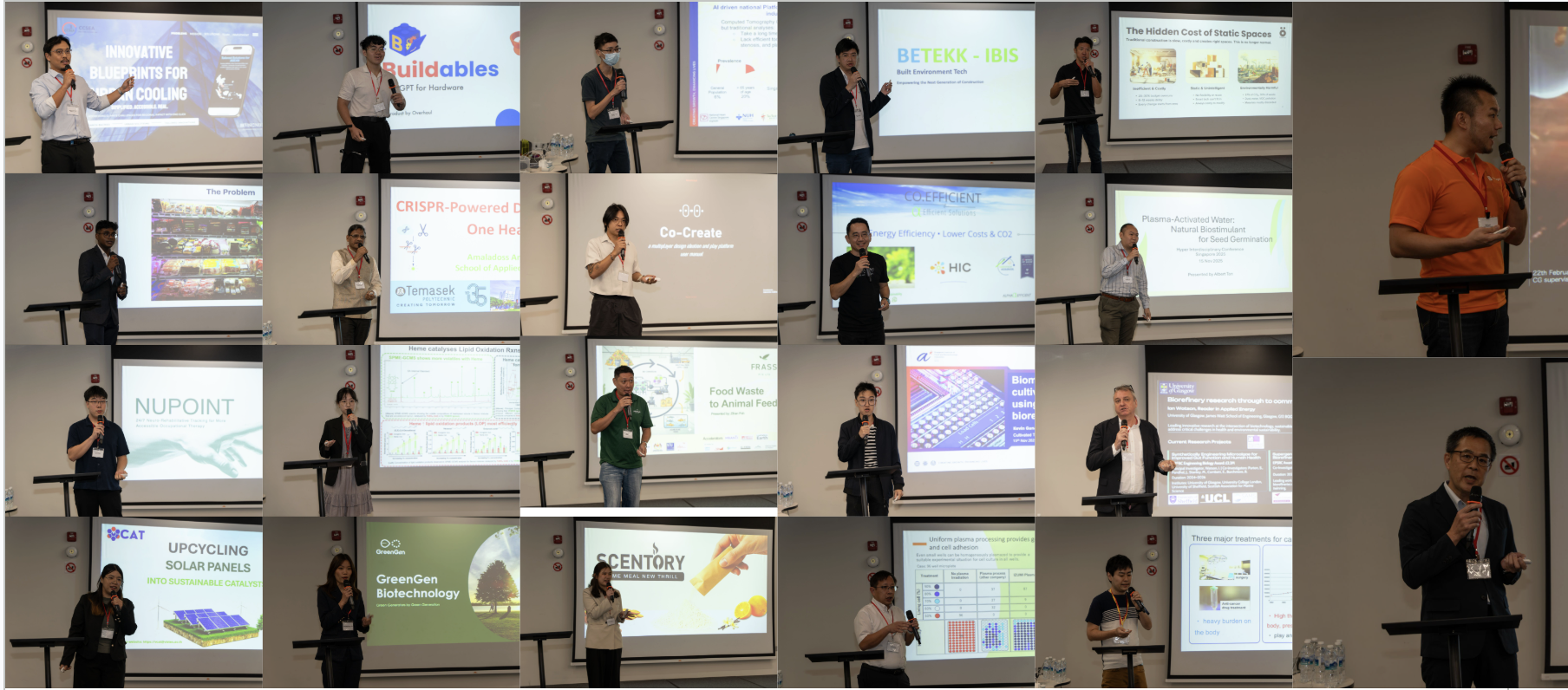
The event in the afternoon comprised of Panel sessions and Poster presentations.
Panel 1 — Climate Realities and the Net Zero Imperative
In the opening panel featuring Xinterra, Circular Unite, and MUFG and moderated by Ambrose Chia, speakers emphasized that decarbonisation success depends on credible transition pathways rather than isolated pilots. They argued that technical milestones must be mapped to bankable finance and procurement routes from the outset, with measurement and verification, third‑party life‑cycle assessment, and clear standards enabling blended finance. A recurring theme was the pairing of materials innovation with circular design—repairability, recyclability, and secondary markets—so that sustainability claims withstand investor and policy scrutiny. The discussion urged teams to build lightweight “data rooms” early, aligning evidence and financing to accelerate adoption.
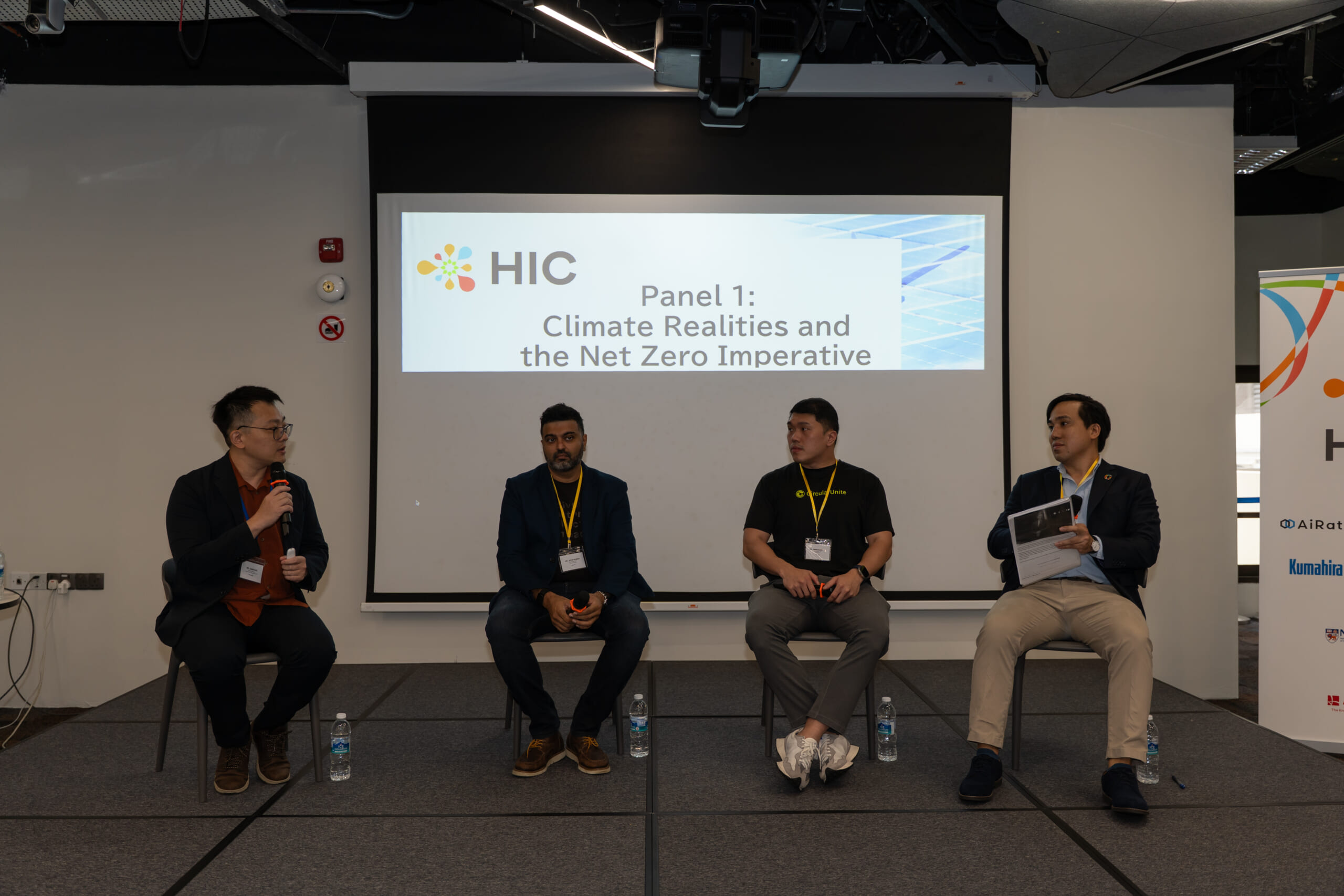
Panel 2 — The Race to Scale: What Will Power the Next Decade?
Representatives from A*STAR, HY, and Helical Fusion, guided by moderator Shohei Maekawa, discussed how manufacturing readiness must be planned in parallel with scientific progress. Beyond achieving performance in the lab, participants highlighted the importance of design for yield, serviceability, and supply‑chain resilience, together with safety cases and interface standards that reduce integration friction. For grid‑related technologies, interconnection studies and safety dossiers were framed as decisive gatekeepers for deployment. The panel recommended attaching manufacturing plans and draft telemetry or interface specifications to scale‑up proposals to compress time‑to‑deployment.
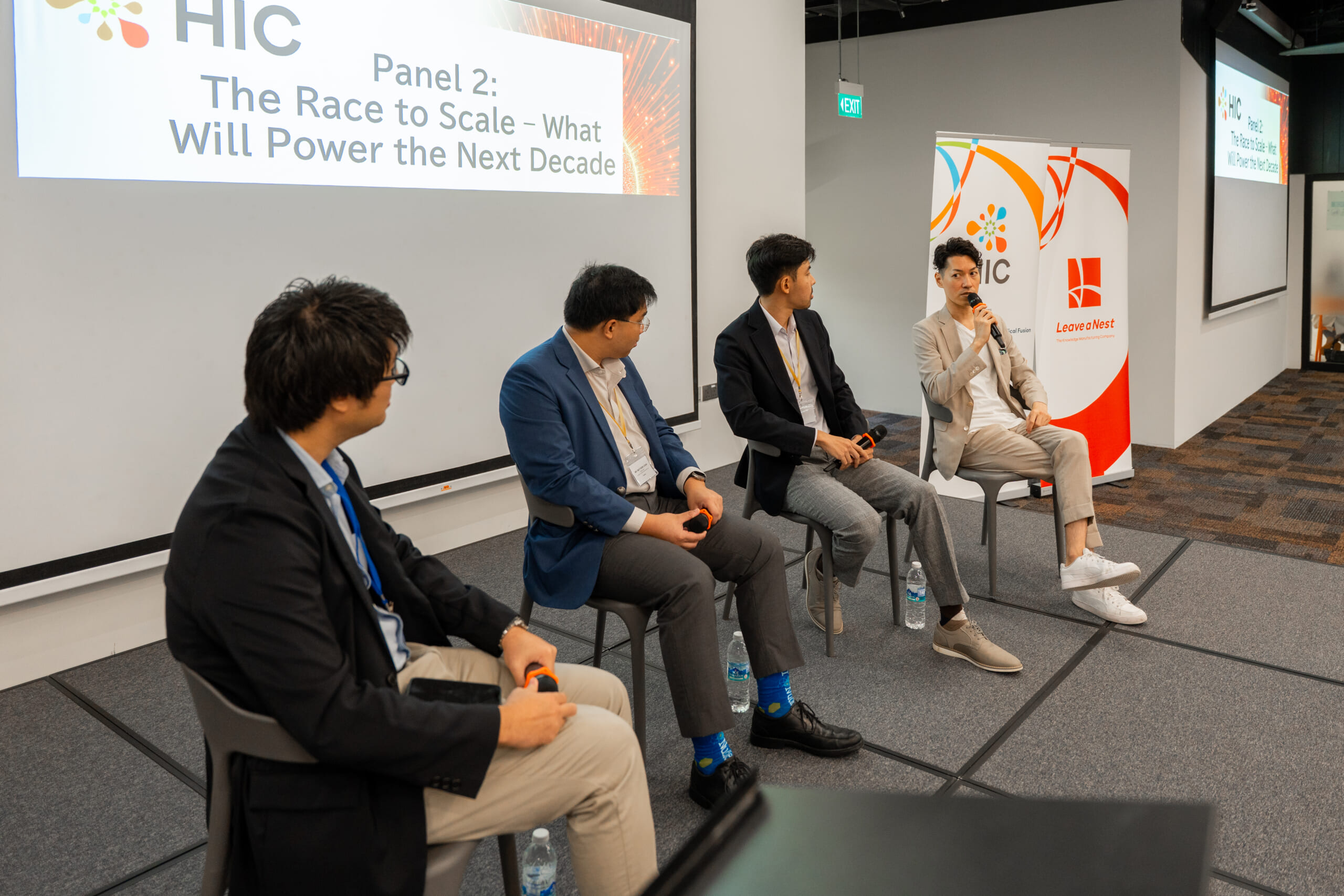
Panel 3 — Feeding Tomorrow: Cultivated Meat and Energy‑Efficient Nutrition
With Umami Bioworks, A*STAR, Esco Aster, and Metagen on stage and Priyavadana Meyyappan moderating, the conversation focused on the intertwined cost drivers of cultivated protein: stable cell lines, media optimisation, and bioreactor productivity, all while tracking energy intensity as a board‑level KPI. Speakers underscored that transparent regulatory dossiers and cradle‑to‑plate life‑cycle assessments are essential for both approvals and consumer trust. Many saw hybrid products as pragmatic first steps to achieve price points and build acceptance. The panel encouraged method‑sharing compacts—on media recycling, sensor sets, and process analytics—to avoid duplicated R&D and bring the category to commercial pilots sooner.

Panel 4 — Healthcare Innovation: Technology for a Better Tomorrow
In the healthcare panel featuring AiRato, NDR Medical Technology, and StratifiCare, moderated by Dr. Kihoko Tokue, speakers stressed that clinical adoption depends on workflow fit more than novelty. Solutions that improve time‑to‑decision, integrate with EMR systems, and reduce procedure time are more likely to gain traction. Payers and hospital committees increasingly require prospective evidence tied to economic endpoints such as length of stay and readmissions. Participants advised teams to scope 90‑day clinical evaluations with clear endpoints and IT integration plans, coupled with early reimbursement briefs to shorten approval and onboarding cycles.
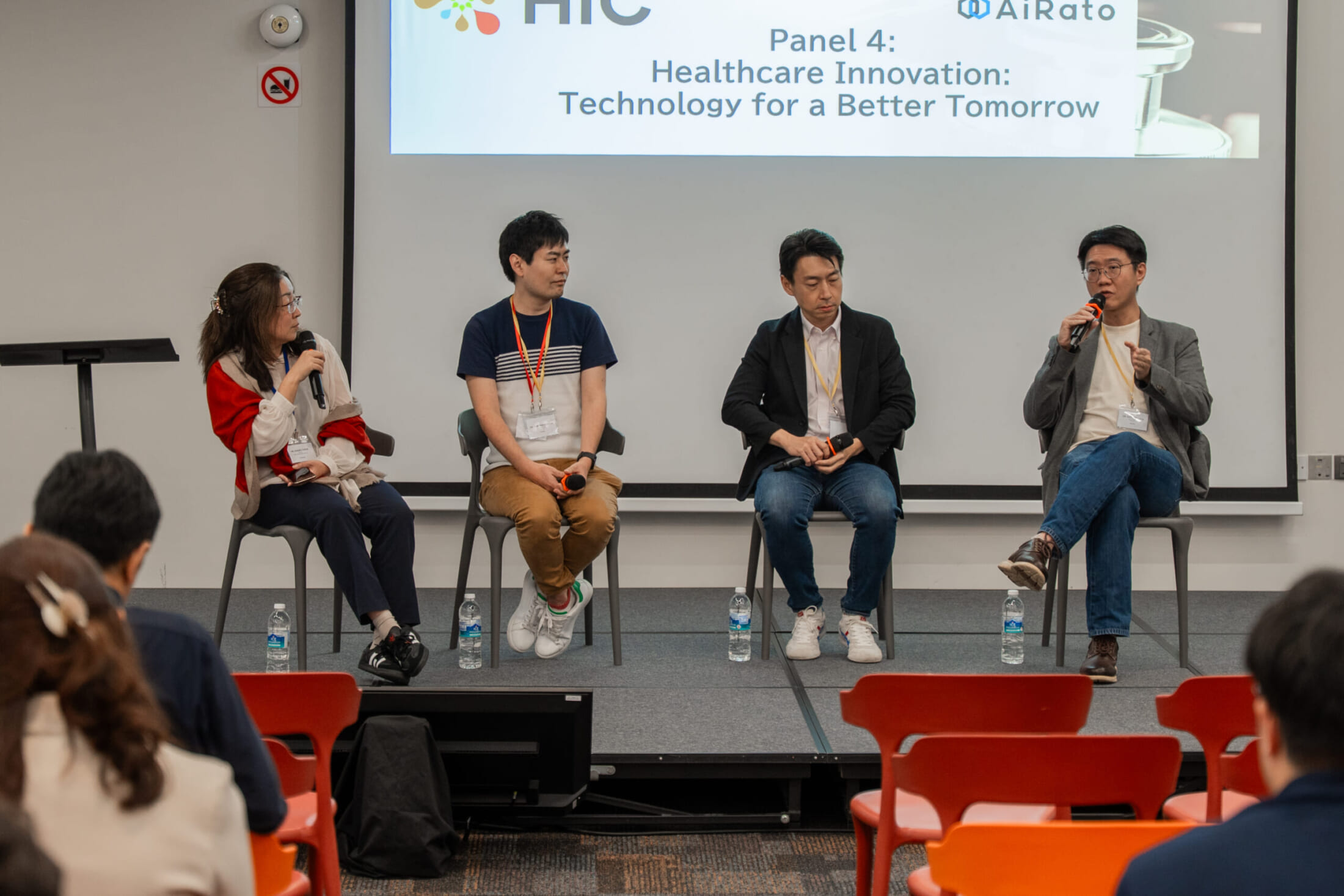
Posters Presentations, Collaborations and Awards
The afternoon poster session translated morning interest into hands‑on dialogue. Presenters captured structured interview data, surfaced pilot opportunities, and initiated work on standards and validation. Poster awards recognised contributions that combined clear problem definition, methodological rigour, and high potential for societal impact. Many teams left with specific follow‑ups—calendar holds for pilot scoping, dataset exchanges, and introductions to implementation partners.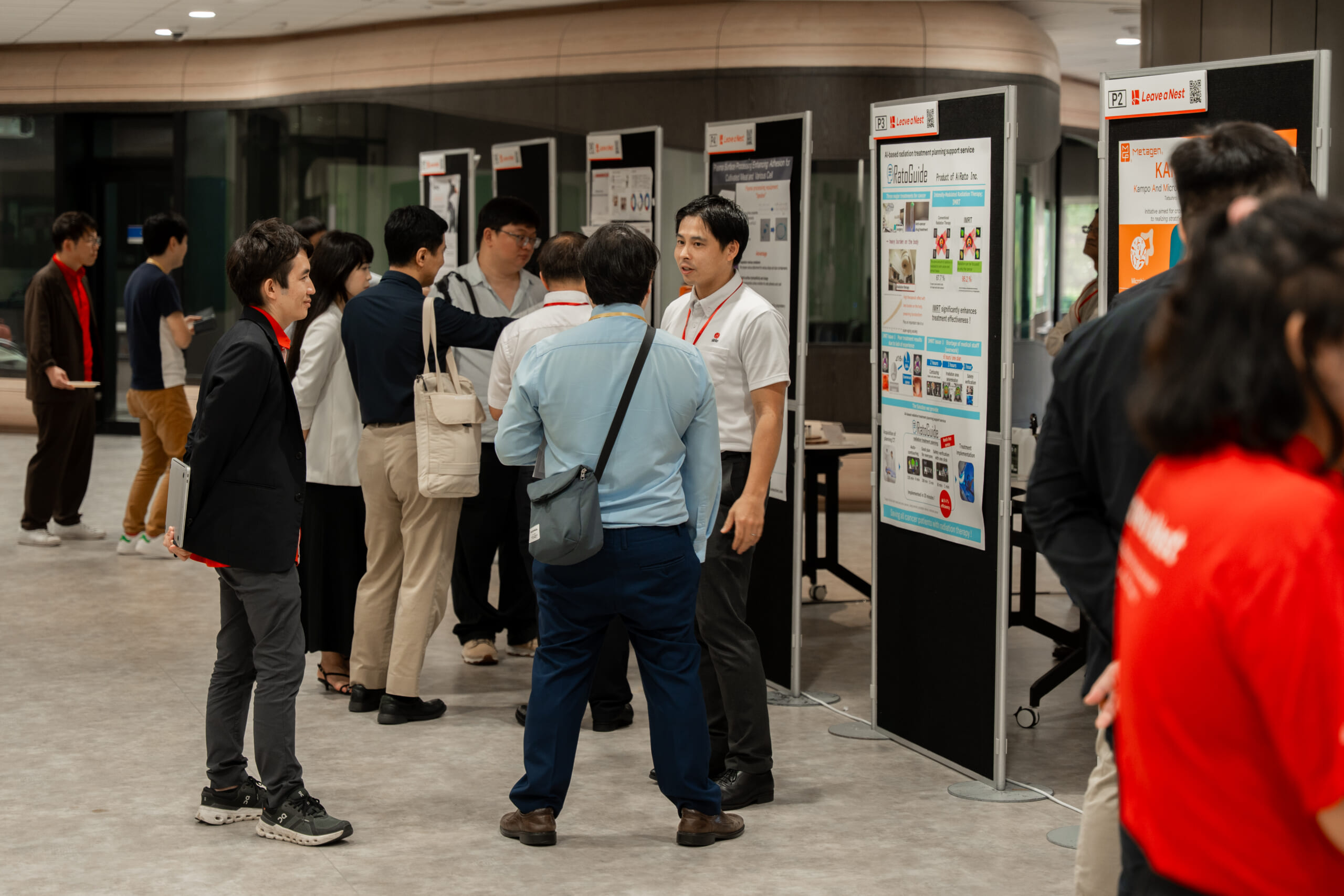
There was 3 awards were presented to the poster presenters, which are People's Choice award, HIC Founder award and Leave a Nest award.

The event was concluded by Dr. Kihoko Tokue, Managing Director of Leave a Nest Singapore with a strong message to have action from the participants.
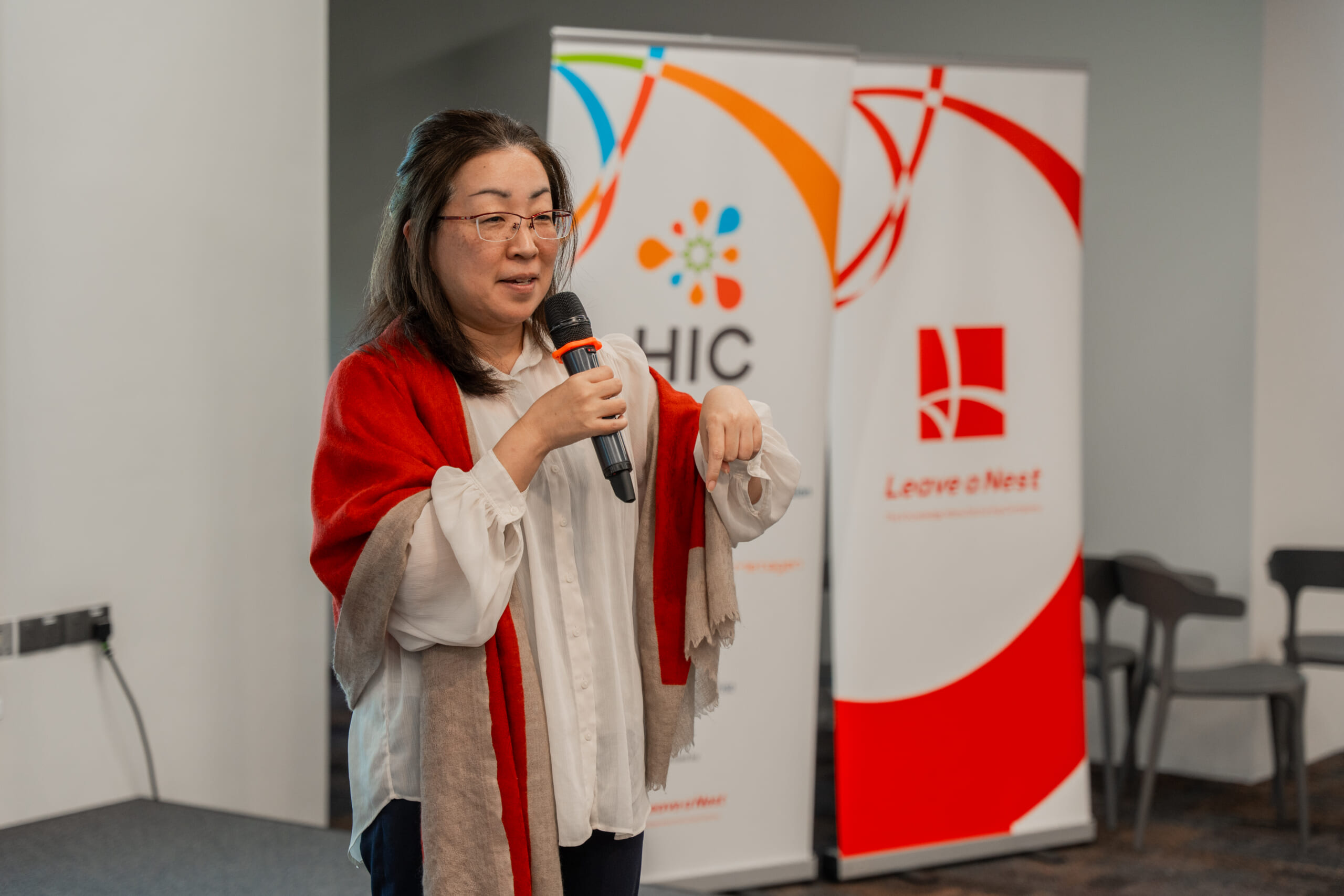
About Leave a Nest
Leave a Nest is a global organization advancing the development and real‑world application of emerging technologies through Science Bridge Communication, working with researchers, universities, startups, and industry to translate ideas into solutions for society.
For more information and Partnership Enquiries: Leave a Nest Singapore — [email protected]
